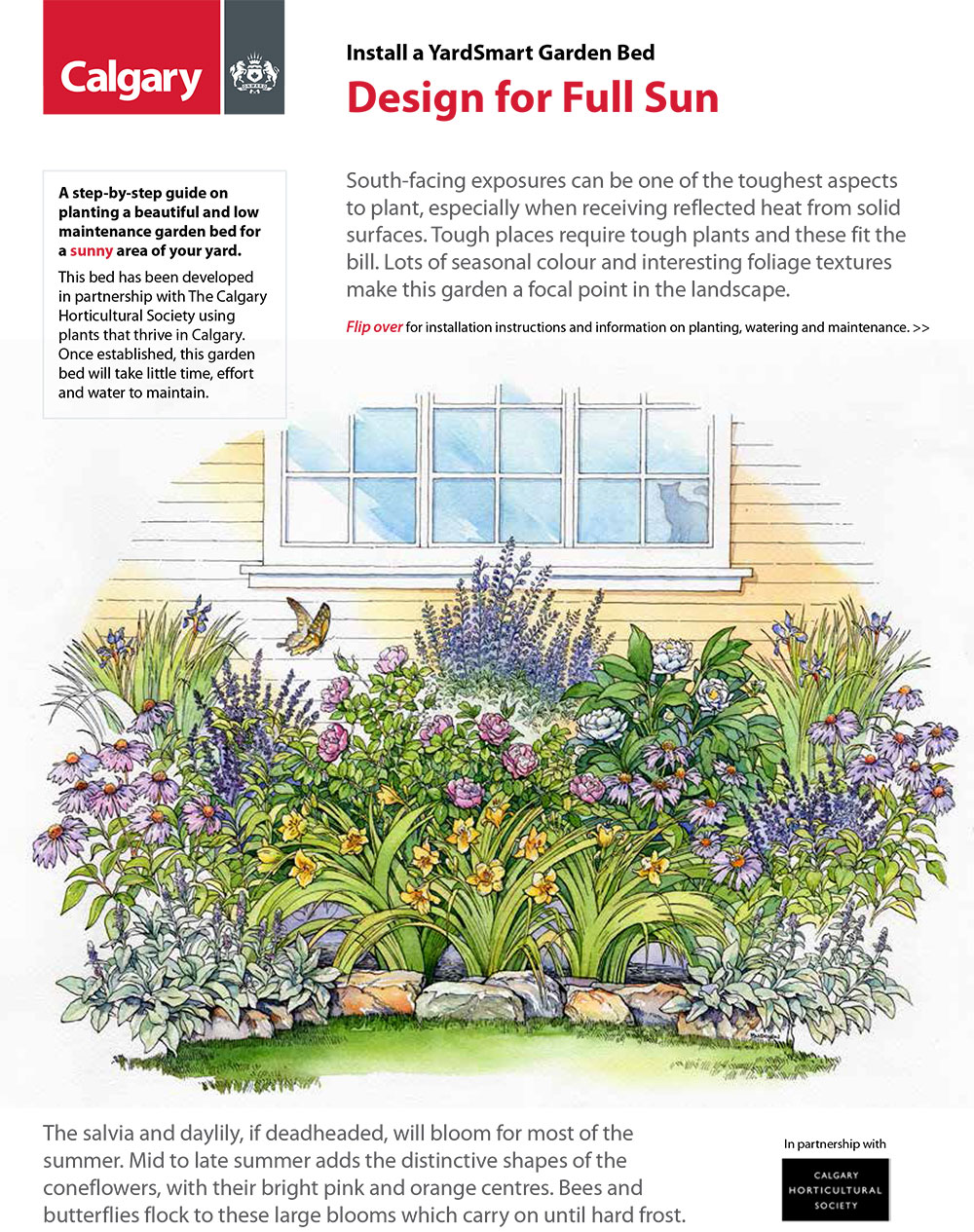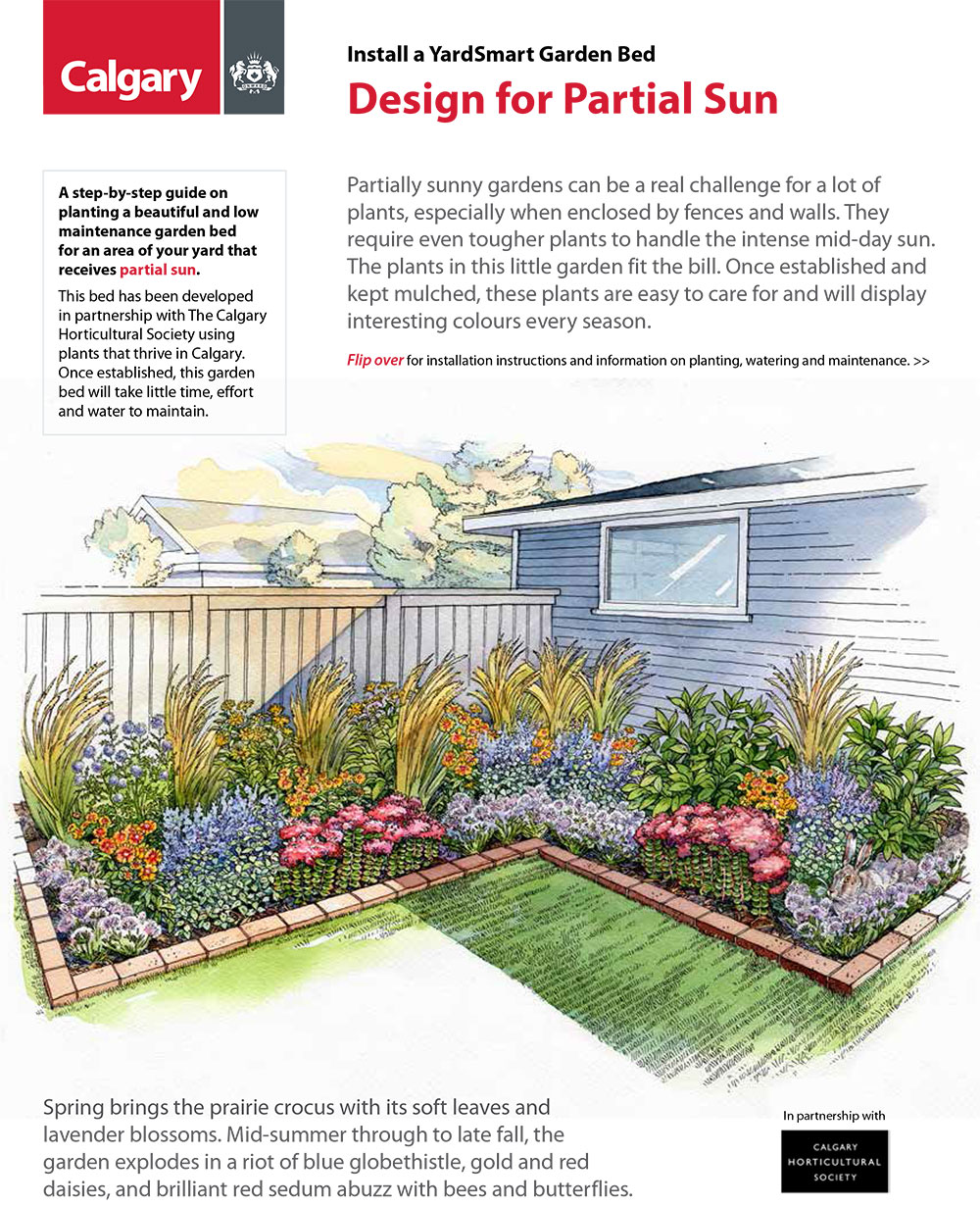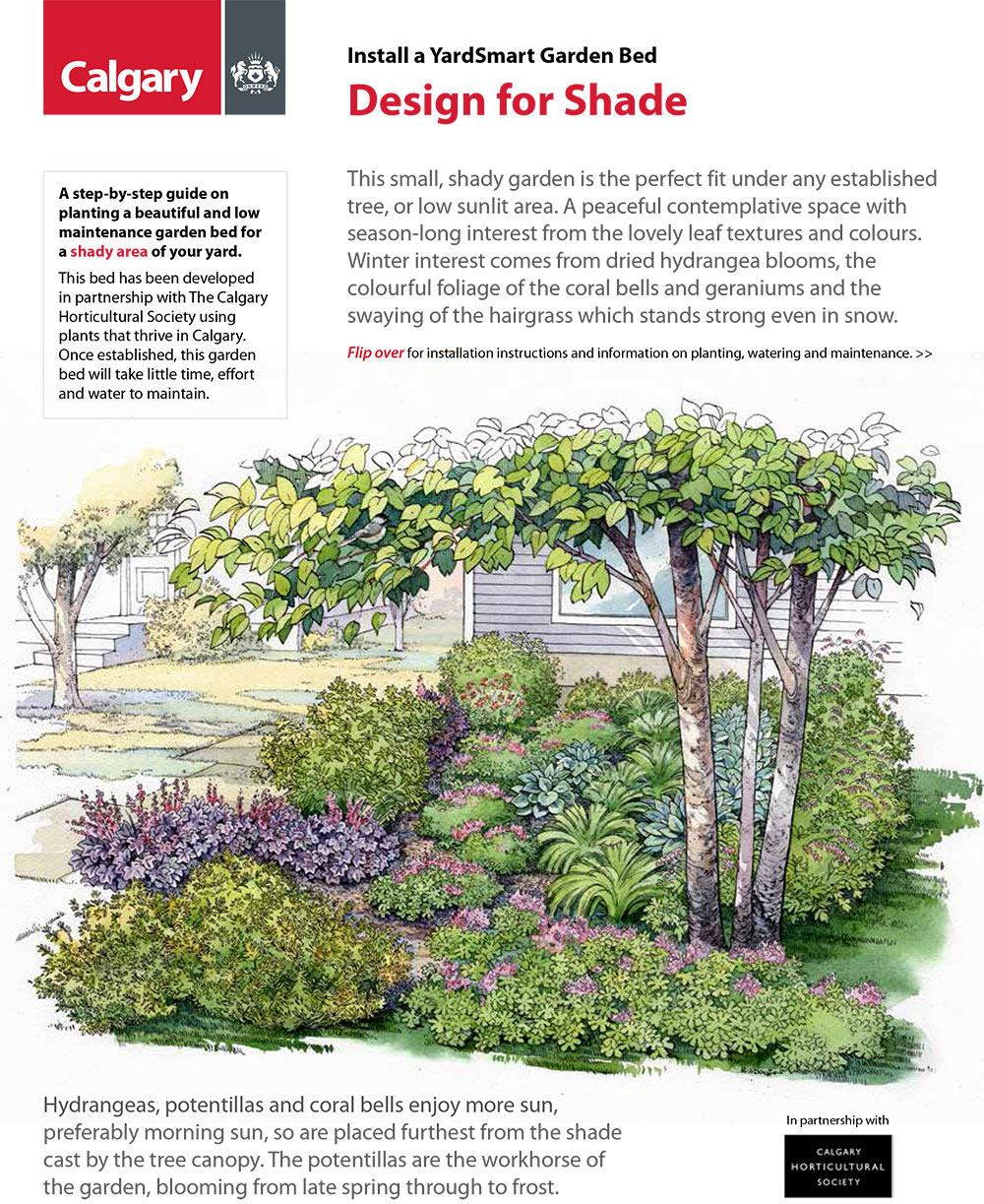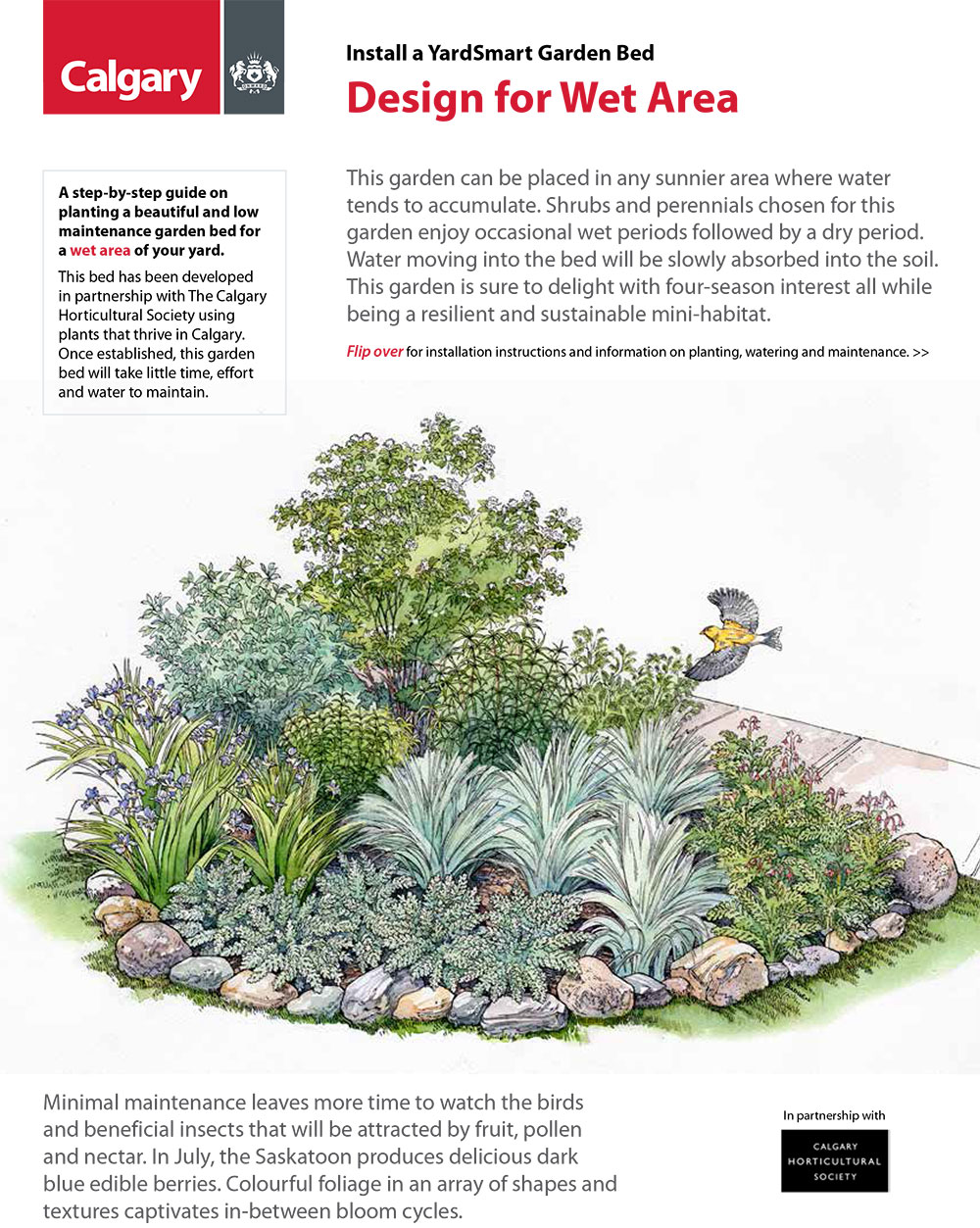Watering 101 - New, Developing Landscaping
Spending time in an outdoor space that is inviting and beautiful, low maintenance and easy on the environment is summer’s great reward.
Starting with the YardSmart basics to help build your landscape from the ground up can provide you with that ideal outdoor space.
Consider the watering needs of plants when establishing your landscape. It's key to having a beautiful, drought tolerant space to enjoy.
Outdoor water use can increase in the summer months. Keeping a close eye on the watering needs of plant material when establishing your new landscape can help keep this increase to a minimum.
Be sure to only apply water to plants when needed and check watering tools regularly (including automatic irrigation systems) to ensure they aren’t leaking.
Do you have an established yard? Visit Watering 101 – Established, Mature Landscaping for more information on watering. For other resources on landscaping, including what plants grow best in Calgary, visit YardSmart.
Tips for watering your lawn
- Water is best applied according to your soil type, weather and plant type.
- Plants prefer rain water over water from the hose. Set up your rain barrel to collect rain water to use on your yard. Learn more at YardSmart - Rain Barrels.
- Always water low and slow and never apply water faster than your soil can absorb.
- Water before 10 a.m. or after 4 p.m. to reduce evaporation.
- Overwatering can lead to plant death. Soils in Calgary are generally clay-based, and retain more moisture. Always check your soil moisture before watering.
- Sun, shade and wind affect how much water evaporates from the soil. Adding mulch to cover soil around plants, shrubs and trees helps retain soil moisture.
- For more information on irrigation, please visit Irrigation Setup and Maintenance Tips.
Track your water use
- Knowing how much water you currently use outdoors will help you track water savings in the future.
- Compare your average monthly water use over the winter months, to the months you are using water outdoors in the summer.
- The difference between summer and winter consumption is the volume of water that you are using outdoors.
- To compare to the previous year, look at past bills, or at the historical water use graph at the top of your water bill to get a year over year comparison.
Watering and types of soil
Soil texture changes how much moisture the soil can retain and for how long. This affects how long it takes to moisten roots, and how quickly the soils will dry out again.
Checking soil moisture with a soil moisture probe both before and after watering is the best indicator of adequate watering. Soils in Calgary are clay-based and retain more moisture than it might appear.
Amend your soils with compost to improve soil texture and health. See our free Green Cart compost pickup dates.
Increase the amount of top soil where ever possible. Having a minimum of eight inches of top soil will improve water absorption and drainage of your soil.
Visit Top Soil Calculator to determine how much soil you need for a project.
Watering and plant needs
Some plants need regular watering, others less. How you water new plants affects the root development, which affects how much water they will consume in the future.
Always read the plant tag to know what each plant specifically needs depending on their location requirement, and put the right plant in the right place (eg. full sun, part shade, shade, etc).
Avoid planting in hot, dry weather as this easily stresses plants and can place highly demands on watering needs.
Select plants appropriate for your growing zone – native and drought-tolerant plant species will require less water.
Need help designing your garden?
Not sure which plants to use or the right spot to plant them?
Download our step-by-step pdf guides or click on the image below to learn how to create beautiful and low maintenance garden beds which work in all areas of your yard:
Once established, these gardens take little time, effort, and water to maintain.
Watering guide for new plants
| Perennials (> 8 weeks) | Annuals (> 3 weeks) | Trees (> 3 years) | Shrubs (>8 weeks) | |
|---|---|---|---|---|
|
When to start watering (Spring) |
Look for new growth and soil warmth |
When you plant or seed your annuals |
Once ground is not frozen and buds are starting to swell |
Once ground is not frozen and buds are starting to swell |
|
When to stop watering (Fall) |
When first hard frost occurs |
When plant dies, petals fall off |
When ground is frozen |
When ground is frozen |
|
How often to water |
Species dependent, about every six days |
Every one to two days as long as soil is drying out between |
Weekly (check for dry soil) |
Weekly (check for dry soil) |
|
Where to water |
At base of plant |
At base of plant |
Area under the drip line |
Area under the drip line |
|
Right watering tool for the job |
|
|
|
|
|
Visual cues to indicate water needed? |
|
|
|
|
|
How much to water |
Until soil is moist to the base of the root system (about 1-2 inches down), low and slow |
|
Water your tree for about 30 minutes with water flowing at just a trickle. Water needs to penetrate about 10 inches below the surface. Stop if you see water pooling or running off the surface. |
Deep enough to moisten the entire root zone. Check for dry soils before watering. |
|
What else do I need to know? |
Check the soil moisture around plant base to determine whether plant needs water |
Potted plants dry out more often and require more water than plants in the ground |
For more information, visit Tree and Shrub Care |
For more information, visit Tree and Shrub Care |
Watering guide for new lawns
| LawnsSeed (> 4 weeks) | LawnsSod (> 3 weeks) | |
|---|---|---|
|
When to start watering (Spring) |
After seeding | On installation |
|
When to stop watering (Fall) |
N/A |
N/A |
|
How often to water |
|
|
|
Where to water |
Over entire area. Be sure to water early in morning and ensure your sprinklers are directed away from driveways and sidewalks. |
Over entire area. Be sure to water early in morning and ensure your sprinklers are directed away from driveways and sidewalks. |
|
Right watering tool for the job |
|
|
|
Visual cues to indicate water needed? |
Seeds are not germinating. |
Edges between sod are pulling apart or separating. |
|
How much to water |
0-10 days - 10-15 minutes to a soil depth of one quarter inch.10-28 days - 30 minutes to a soil depth of a half inch – do not allow pooling of water. Every 3-4 days ensure soil has opportunity to dry out before next watering. |
|
|
What else do I need to know? |
Frequent, light watering will keep soil moist and will spur seed germination, deep watering is not necessary at this time. As seedlings emerge, the intervals between watering can be lengthened. |
Do not water late at night or in the evenings as new seedlings are susceptible to disease. Pull gently on corner of sod to ensure it is properly rooting. |





